Accessibility
A variety of inclusivity initiatives are conducted to make the Yebisu International Festival for Art & Alternative Visions enjoyable for all, regardless of age, physical condition, disability, or ethnic or cultural background.
Sponsored: Corporate Membership of Tokyo Photographic Art Museum
01 Make the most of the festival with the Easy Highlights Guide
02 Spoken explanations with Uni-Voice
2D codes compatible with the Uni-Voice app for spoken explanations about the highlights on each exhibition gallery are being distributed. Please download the app on your smartphone or tablet to read the codes. Codes are available at the reception desks on each floor of the Tokyo Photographic Art Museum.
03 Visual and auditory support tools
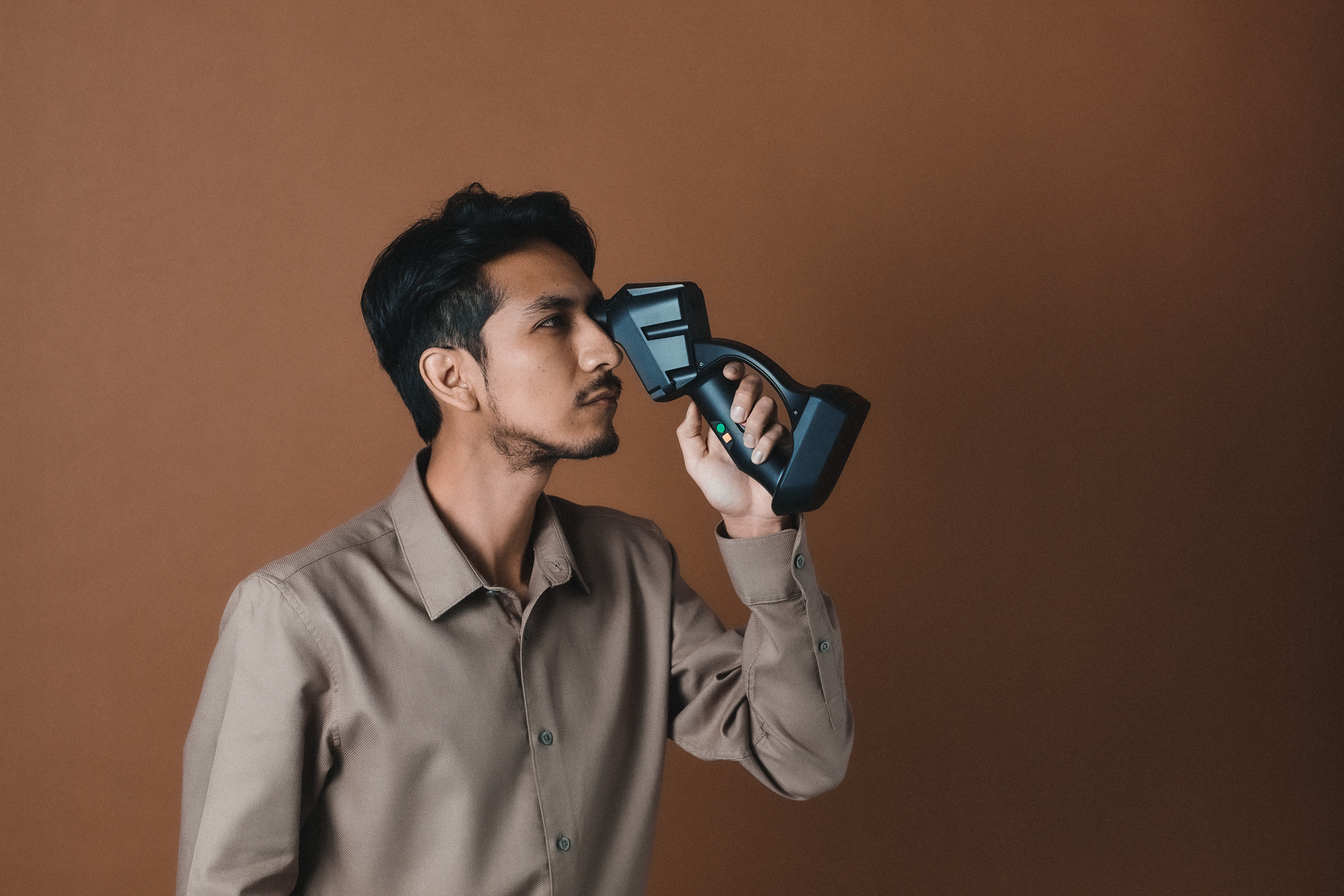
04 Accessibility support by TOP volunteers
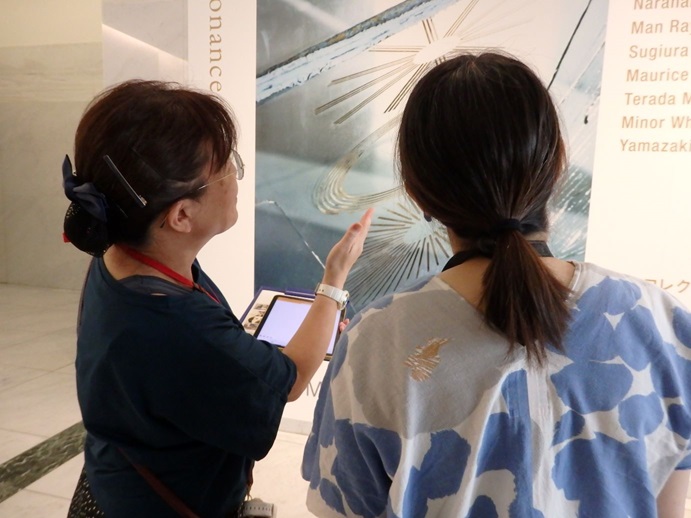
TOP volunteers are on hand to guide you at the museum and help you enjoy the exhibitions. Volunteers can provide support including communication in writing, reading text aloud, and lending visual and auditory support tools, letting you enjoy the museum as you like.
Dates and times: Saturday February 8 and Sunday February 16, 1:30–5:30 p.m. (reception closes at 5:00 p.m.)
Venue: Tokyo Photographic Art Museum
Price: Free
All visitors welcome
*Support is only provided in Japanese
Reception: 1st floor lobby or 1st floor studio
*Advance reservations are not required / Duration: within 30 minutes / You may be asked to wait during busy hours / Explanations of specific artworks or physical assistance are not provided
05 Staff proficient in sign language
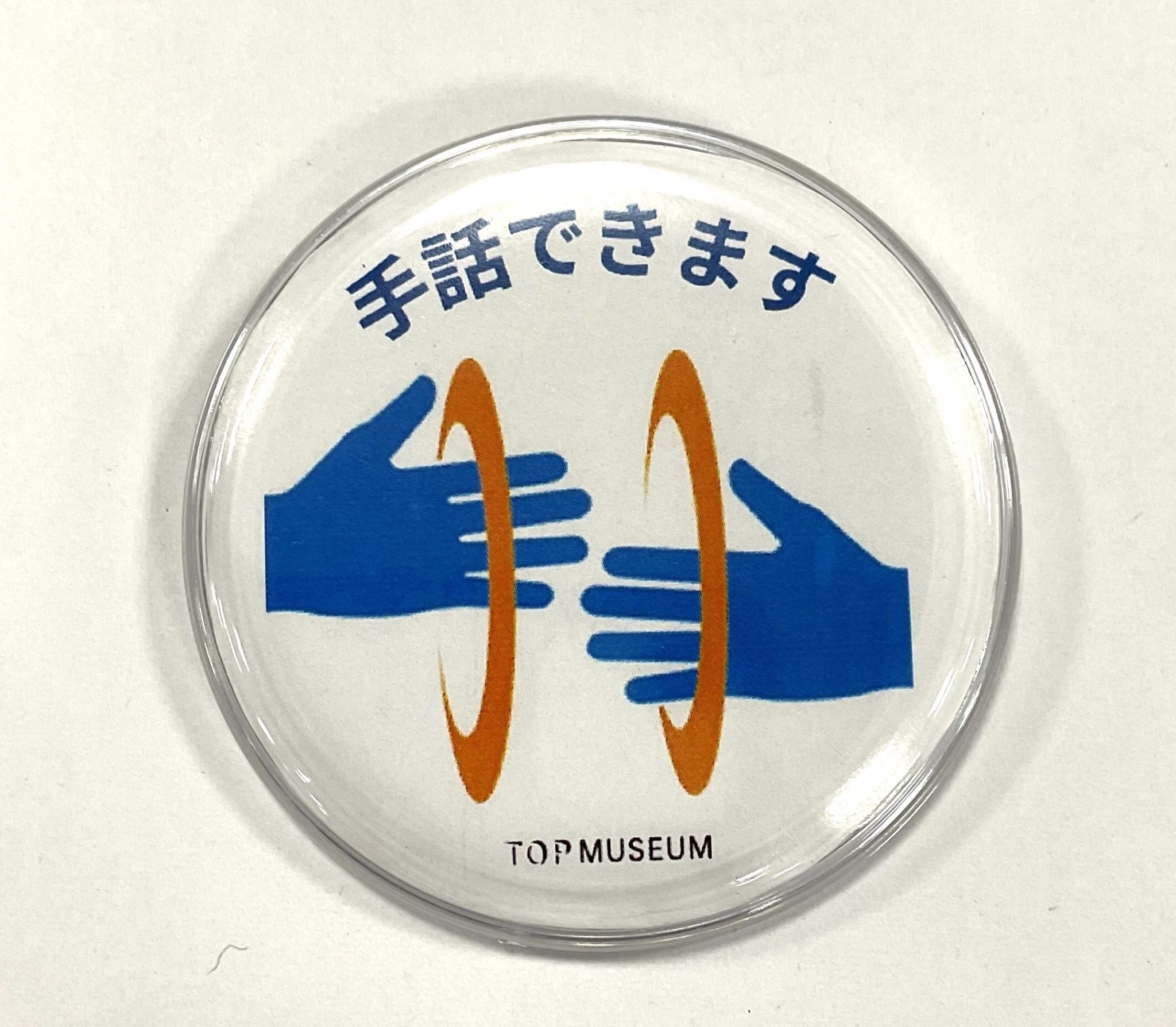
Staff proficient in sign language are stationed at the Information Desk on the 1st floor throughout the festival period. They wear a badge with a sign language symbol. Please feel free to address them in sign language and ask about things like how to navigate the museum and how to take part in events.
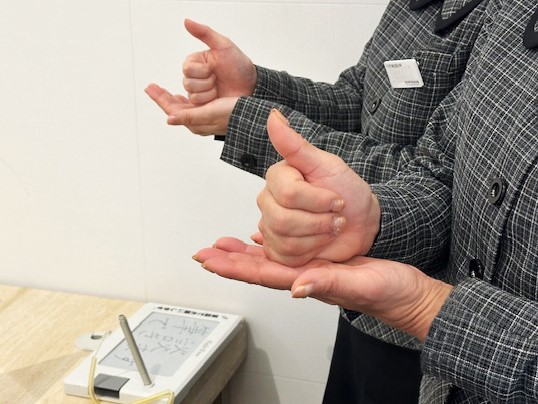
“TOP for ALL” Accessibility Website
Aiming to make the Tokyo Photographic Art Museum enjoyable and accessible for all, the museum makes a variety of accessibility information available on its website. In addition to indicating barrier-free routes to the museum from Ebisu Station, the website includes information on facilities such as accessible toilets, nursing rooms, and rest areas, as well as details on stroller and wheelchair availability, communication boards and sign language, visitor guide in braille, and more.
Welcome to the Tokyo Photographic Art Museum
In this video, a navigator will show you how to get to the Tokyo Photographic Art Museum and introduce the museum facilities. The explanation is provided in sign language, with Japanese subtitles, and narrated in Japanese.
Barrier-free Routes

Getting to the museum by train and on foot: Barrier-free routes
The following photos will show you how to get to the museum from Ebisu Station on the JR Yamanote and Tokyo Metro Hibiya Lines. There are barrier-free routes [pdf 1.9mb] for wheelchair users (one for clear days and another for rainy days) and visitors with a visual impairment.
Getting to the museum by car: Taxi
Those arriving at the museum by taxi or other car may get off at the driveway by Yebisu Garden Place Tower and enter the museum through the main entrance (on the east side of the building).

Getting to the museum by car: Parking for wheelchair users
The museum has a free parking space reserved for wheelchair users and other visitors who require assistance when getting on or off a vehicle. The 220 cm x 630 cm parking space can fit one vehicle. A valid disability ID is required to use the parking space. Please call 03 3280 0099 ahead of your visit to inquire about availability.
Paid priority parking for those with disabilities is available at Yebisu Garden Place.
Museum Accessibility
Floor Map
Please see the Floor Map page for maps of each floor.
Slopes and Automatic Doors
The museum and its exhibition galleries are wheelchair accessible. The doors in the museum are automatic, except in the hall, studios, and café.
Braille Blocks
Braille blocks are built into the corridor floors inside the museum (except for exhibition galleries and the hall).
Elevator
All floors are wheelchair accessible by elevator. Elevator doors open from the center and are 110 cm wide and 210 cm high. There is an automatic voice guidance system, Braille displays on the control panel, and handrails in three directions. The inside of the elevator is 200 cm wide, 170 cm deep, and 240 cm high.

Accessible Toilets
There are accessible toilets on each floor of the museum. The toilets have automatic doors and are wheelchair and stroller accessible. There is an ostomy-friendly toilet on the 1st floor and diaper-changing stations are available. Please see the Universal Guidebook [pdf 1.8mb] for details.

Wheelchair and Walking Chair Rental
Wheelchairs (transit/self-propel) and walking chairs can be borrowed free of charge while visiting the museum. Please note that availability is limited and reservations are not taken. Please inquire at the Information Desk on the 1st floor.

Service Animals
Seeing-eye dogs and other service animals are permitted in the museum.

Wheelchair Space (1st floor hall)
There is a viewing space for three wheelchairs (252 cm wide and 89 cm deep) in the 1st floor hall.
Communication
Multilingual Communication
Assistance in English, Chinese, and Korean is provided at the Information Desk on the 1st floor.

Communication Boards
Available at the Information Desk on the 1st floor, at reception desks on each floor, and at the library counter.
UDTalk (transcription app)
UDTalk support is available at the Information Desk on the 1st floor, at reception desks on each floor, and at the library counter. (UDTalk is a voice transcription app for communication support, installed on tablets in the aforementioned places.)

Sign Language
Staff proficient in sign language are stationed at the Information Desk on the 1st floor every day during the Yebisu International Festival for Art & Alternative Visions.They wear a badge with a sign language symbol.
You can also use the remote sign language interpretation service (using QR codes) provided by the Tokyo Metropolitan Government Bureau of Social Welfare and Public Health. Please see the Bureau’s website for details.
Accessibility Support
Library User Guide
Please see the Library User Guide [pdf 3.1mb] for details. Print versions of the Guide are available at the library counter.

Magnifier and Magnifying Glasses (Library)
The magnifier in the library is a visual aid that enlarges the text or pictures in a book placed under the camera and displays them on the screen. It also has functions such as black and white inversion. We have magnifying glasses with 2x, 4x and 7x magnification. Use is limited to the library. Please inquire at the library counter.

Retissa On Hand (visual assistance device)
Retissa On Hand is a handheld visual assistance device developed mainly for people with low vision. It projects a focused image onto the retina using a safe laser, allowing users to see and enjoy things that would otherwise be difficult to see. Results vary from person to person. Use is limited to the library. Please inquire at the library counter. For more information about the product, please see the QD Laser Inc. website.

Hearing Loop (hearing assistance device)
This hearing support system uses the magnetic induction coils built into hearing aids and cochlear implants to make it easier to hear sounds. It can be used for screenings and talks in the 1st floor hall. To use the system, the hearing aid or cochlear implant you are wearing must have a T-coil (T-mode) switch or a program that can use T-coils. A limited number of receivers are available to borrow for those without a hearing aid. Please inquire at the 1st floor hall reception.
Visiting the Museum with Small Children

Nursing Room
Located next to the accessible toilet on the first floor. You can enter with a stroller. The nursing room includes a private, lockable room, two chairs, a table, and a diaper-changing station. Hot water to prepare baby formula is available from a faucet.
Diaper-changing Stations
Available in the nursing room on the 1st floor and in the accessible toilets on each floor.
Strollers
Strollers can be borrowed free of charge while visiting the museum. Please note that availability is limited and reservations are not taken. Please inquire at the Information Desk on the 1st floor.
For a Worry-Free Visit

Tactile Guide Maps
We have tactile guide maps (floor maps) available for those with visual impairments. Please inquire at the Information Desk on the 1st floor.

Rest Areas
There are tables, chairs, and benches in the 2nd floor lobby, as well as benches on the 1st and 3rd floors. We also have a rest space you can use if you’re not feeling well. Please let a nearby staff member know.
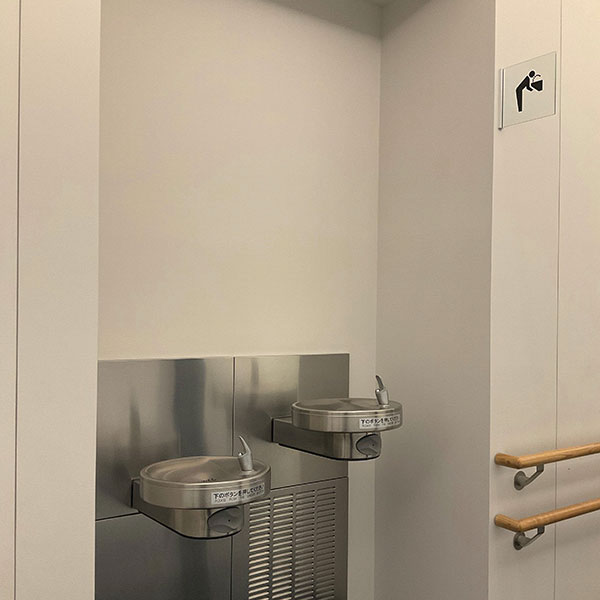
Water Coolers
Available on floors B1, 1, 2, and 3. Some of the coolers are lower and accessible to wheelchair users.
AEDs
Automated External Defibrillators (AEDs) are available by the Information Desk on the 1st floor and in the lobby on the 3rd floor.
Universal Guidebook
Contains information on the facilities. Please see Tokyo Photographic Art Museum Universal Guidebook [pdf 1.8mb].
Other Requests and Questions
If you have any other questions or concerns about visiting the museum, please don’t hesitate to contact us.
Tel: 03 3280 0099
*Telephone support services are available for those with hearing or speech impairments. Please see the Tokyo Metropolitan Government Bureau of Social Welfare and Public Health’s website for details.
*Please note that it may not be possible to meet all requests due to circumstances such as the layout of the building, ongoing exhibitions, available facilities, and our staffing situation. We appreciate your understanding.


